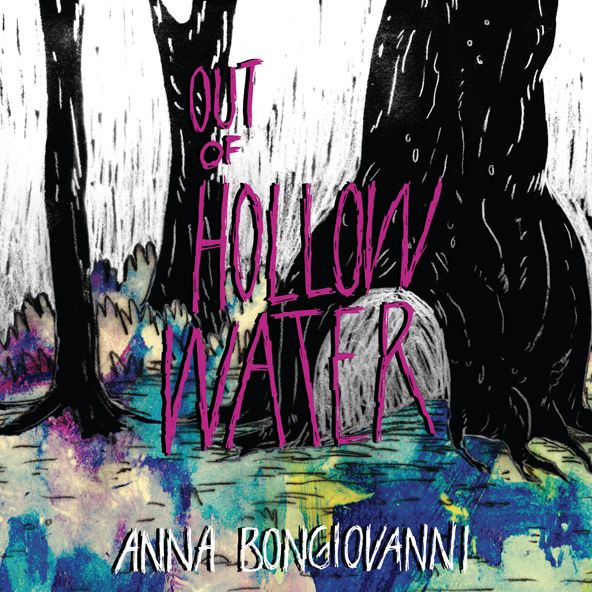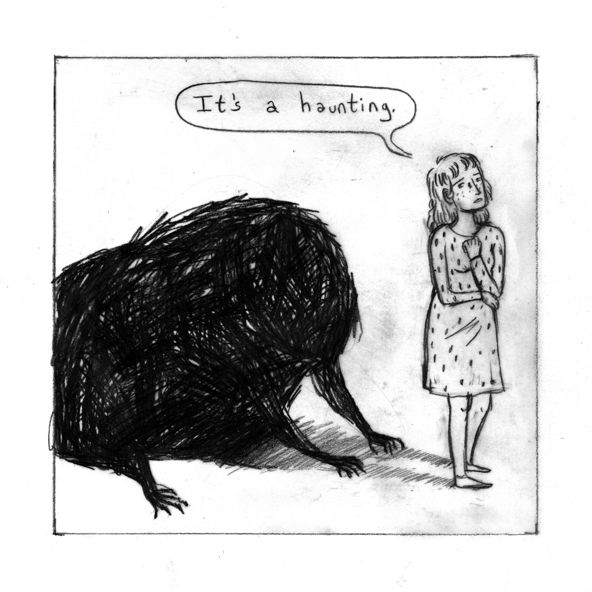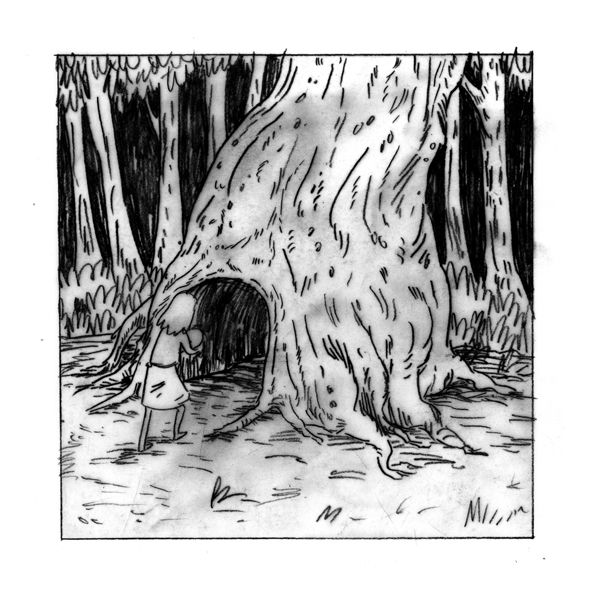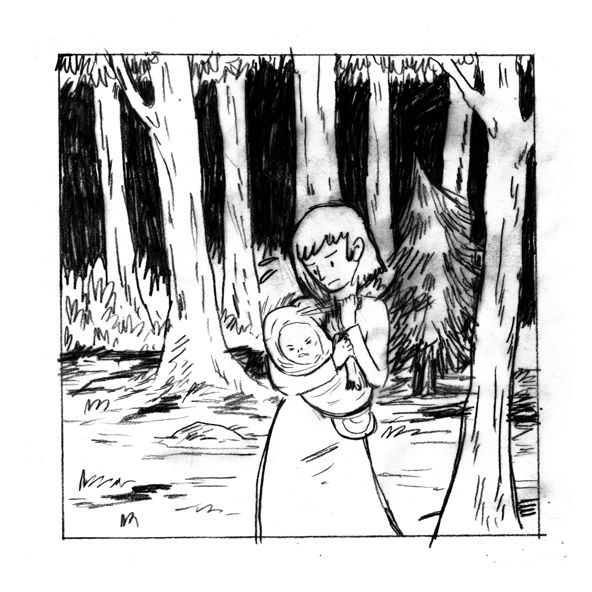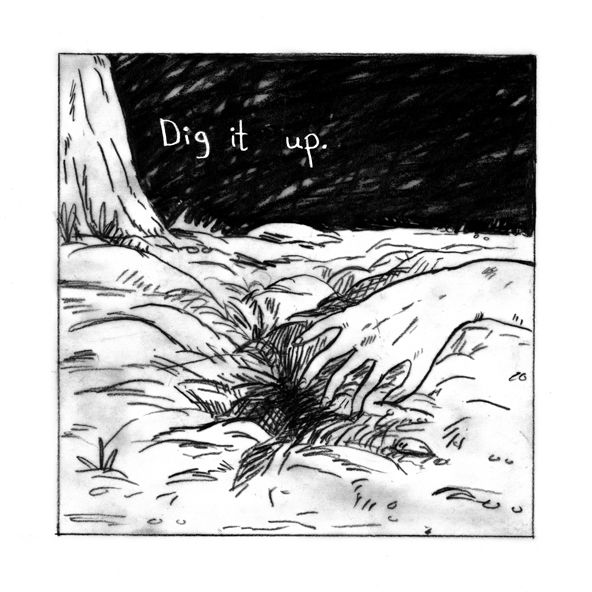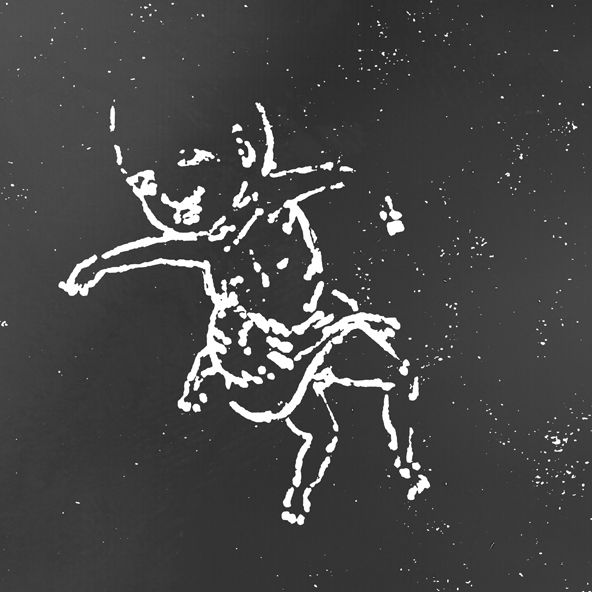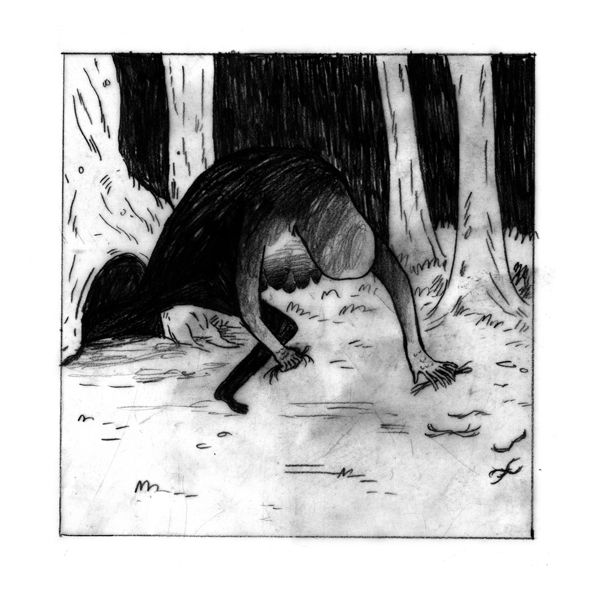Alaska, at least as far as I know, hasn't exactly been regarded as birthplace of notable cartoonists in the same manner that, say, New York or Ohio have been.
Now the 49th state can add at least one name to its roster, Anna Bongiovanni. The Fairbanks native, now transplanted to Minnesota, released her debut Out of Hollow Water through the small-press publisher 2D Cloud. It's a rather haunting trio of short stories, told in simple, one-panel-per-page fashion, to detail various emotional, familial and even sexual trauma. Bongiovanni, however, relies upon folklore and fairy-tale tropes to give her stories an eerie, otherworldly feel that makes these stories both alien and universal at the same time. It's a pretty impressive debut.
I talked with Bongiovanni over email during the holidays about her new book and its origins.
Chris Mautner: First of all, tell me a little bit about yourself. Where are you from? How did you get interested in drawing? How were you introduced to comics and what made you decide to start making your own?
Ann Bongiovanni: I was born and raised in Fairbanks, Alaska. I never got into comics until my parents just happened to buy an Archie comic from the grocery store. Then I was hooked, like obsessed, with Archie comics. Luckily, I calmed down and – while Archie holds a special nostalgic place in my heart – I am not nearly as crazed about the series as I once was. For a few years, I attended the University of Alaska Fairbanks, and tried to major in elementary education, but all I ever did was draw comics. It's what I did in-between homework assignments and during lectures. Instead of going to parties, I was drawing in my dorm room alone. I don't really know what that says about me (yikes), but I couldn't really think about anything other than telling my own stories. It didn't help that I really dislike children and wanted nothing to do with them. My parents convinced me to try attending the Minneapolis College of Art and Design in 2007 and get a BFA in comic art, and I've been drawing comics ever since.
Along a similar note, who are your main influences?
This is always a tough question for me to answer, because I have so many and they vary and change over time. And some of my main influences aren't cartoonists. For a long time I was obsessed with saints and the stories behind their sainthood and feel like this affects a lot of my work. I'm also really drawn to Anne Sexton and her poetry (where the title Out of Hollow Water came from). I've always been drawn to minicomics and people who self-publish their own work. I'm currently really in love with Cathy Johnson's work, as well as Julia Gfrörer, the Doris zines, Hellen Jo and Anders Nilsen.
The three stories in Out of Hollow Water all deal in some manner with the negative aspects of sex, sexuality or sexual trauma, i.e. a bad/abusive relationship, unwanted pregnancy and molestation. Were you consciously attempting to weave these themes together when working on the book or did it happen organically?
I try very hard not to think about the meaning of a comic while I'm drawing it. I never start with the thought "I'm going to work with these themes," the stories develop and then the themes sort of emerge. I want to draw without getting muddled with thinking, "What's the point of this? What am I trying to say?" I avoid thoughts like those because they just get in the way of creating something subconscious or vomiting whatever is bothering me at the time out onto a page. And then at the end, I'm usually a little freaked out by what came out of it. I'm a little freaked out by Out of Hollow Water.
In Water and in some of the short stories you have online, you deal with various elements of folklore and fables, i.e., the woods as a place where secrets are kept hidden, monsters that guard over innocent babes, witches, spells that need to be broken, etc. Do you find yourself naturally drawn to these elements and tropes?
Oh, sure, I feel very comfortable drawing and writing something that reads like folklore. I grew up reading fairy tales and later on thought a lot about Catholic saints and those can sometimes be like fairy tales in themselves. I like playing with fables, not only because they are familiar to many people, with layers of meaning already there, but they can easily be manipulated by whatever story I'm trying to tell. They are a safe place for me to explore and experiment.
Actually, a lot of your stories also seem to take place in the woods. What is it about that environment that attracts you?
To me, the woods are a blank slate. I don't have to explain a time period, a town or city, a culture, or really how people got there. The woods are also a place of transition, of choosing to walk through something difficult and dangerous and emerge changed.
A lot of your stories also seem to deal with family relationships, between mothers and daughters, and sisters, and the sense of obligation and responsibility they share between each other. Is that accurate?
Sure is. Probably for a long time now, I've had a sense of overwhelming guilt, burdening loyalty, and a crushing responsibility when it comes to my family. I guess I also feel all those things in relation to myself as well. It's complicated and it plays out in my comics.
I was interested with how you broke up the different stories with seemingly related sketches and photographs. What was the impetus behind that?
A lot of that had my editor, Raighne Hogan, behind it. He's been familiar with my work for a long time so when I came to him with these three stories, he was really thoughtful and careful about composing them into a book. Most of those drawings were done as just stand-alone illustrations but he remembered them and wanted to add them into the book. It was also his idea to use (extreme) close-up scans of my face and hands to layer with the illustrations. I believe Raighne wanted to keep with the visceral and tender theme of the stories and made sure the whole book as an object felt cohesive.
I wanted to ask you about the shape and format of the book. For the most part you keep it to one square panel per page. Why?
There is something about the square shape that just feels really easy for me to work with. I felt it's what the stories needed in Out Of Hollow Water: space, breathability, emphasis and time. Kind of how I felt while I was drawing it, one panel at a time, one page at a time, one day at a time.
I was taken with the way you portrayed movement in the book, particularly with the monster in the title story. Do you have an interest in animation?
I have never animated anything in my life! I can't say I have a lot of interest in it, other than a fierce love for watching cartoons.


